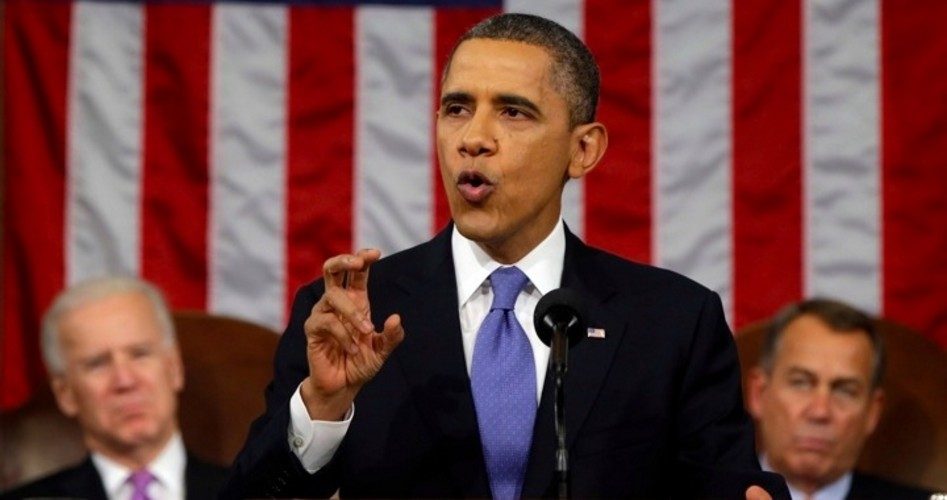
President Obama unloaded a leftist laundry list of new federal spending and high-handed executive decrees in his February 12 State of the Union address, while at the same time supporting no year-over-year spending cuts to federal programs. He announced plans to implement gun control, a national minimum wage of $9 per hour, environmental executive order decrees on carbon emissions, more education spending, federal pre-school care, and many other programs.
Obama claimed during the address, “Let me repeat — nothing I’m proposing tonight should increase our deficit by a single dime. It’s not a bigger government we need, but a smarter government that sets priorities and invests in broad-based growth.” But in reality, the president made no provision for how all these new and expanded government programs would be funded. Moreover, he even campaigned against the spending cuts Congress has already passed, specifically the looming “sequester” spending cuts, which he labeled “a really bad idea.”
The lack of numbers behind Obama’s claims caused open scorn in the CNN newsroom among all but Democratic Party functionaries, and Cincinnati television investigative journalist Ben Swann posted on Facebook page, “He just explained he doesn’t want sequestration cuts, so where does this $ come from?”
The president definitely opposed additional spending cuts in any government programs:
Most Americans — Democrats, Republicans and Independents — understand that we can’t just cut our way to prosperity. They know that broad-based economic growth requires a balanced approach to deficit reduction, with spending cuts and revenue, and with everybody doing their fair share.
Though Obama effectively closed the door on spending cuts, a determined Republican House of Representatives alone has the constitutional power to shut the spending spigot, whether the President and the Senate like it or not.
In his remarks that pooh-poohed spending cuts, Obama also noted that the federal government should be planning the American economy: “Let’s be clear: deficit reduction alone is not an economic plan.” Of course centralized economic planning has a long history of failure, never creating economic growth. Yet the free market unchained from government planning has a long history of strong growth.
Obama continued:
A growing economy that creates good, middle-class jobs — that must be the North Star that guides our efforts…. Our first priority is making America a magnet for new jobs and manufacturing.
Perhaps the most radical proposal from the president was the idea that the federal government would create a national child care program to separate toddlers from their parents. He told Congress,
Today, fewer than three in 10 four-year-olds are enrolled in a high-quality preschool program. Poor kids who need help the most, this lack of access to preschool education can shadow them for the rest of their lives.
Obama concluded:
I propose working with states to make high-quality pre-school available to every child in America. Every dollar we invest in high-quality early childhood education can save more than seven dollars later on. So let’s do what works, and make sure none of our children start the race of life already behind.
The president seemed to be arguing that it’s a tragedy so many children are in the full-time care of their parents for the first five years. If only those parents knew that trained government workers can manage their children better, he essentially argued, they’d eagerly place their children in the care of government bureaucrats.
Obama also warned against “climate change,” claiming that he would issue executive orders on carbon emissions in the absence of a new law passed by Congress. “If Congress won’t act soon to protect future generations, I will. As long as countries like China keep going all-in on clean energy, so must we.” Of course, the U.S. Constitution grants all law-making authority to Congress, and none to the president. President Obama did not outline where he obtained the constitutional authority to legislate by decree in his State of the Union address.



